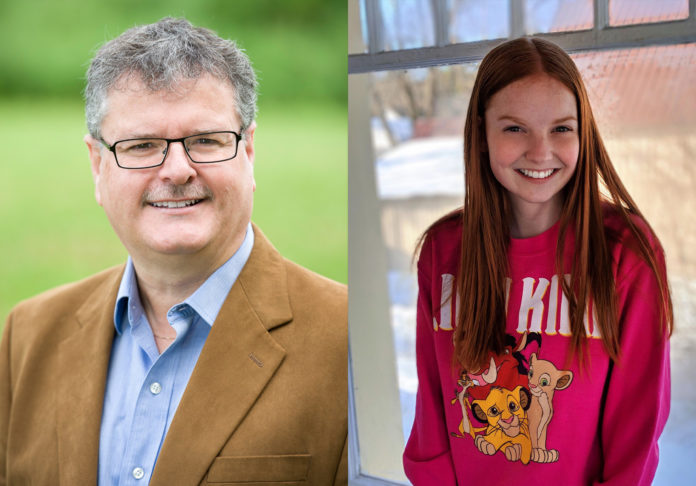

The hallways of River Valley Middle School are almost empty between classes. In any other year, students would flood the halls as they moved to their next classroom. But in the year of the pandemic, the school is different.
Louise Touchbourne, a student in the St. Thomas University bachelor of education program, said the teachers are the ones who travel to different classes. Instead of desks, teachers have carts they push to each room.
“That reduces the amount of students in the same hallway at the same time,” said Touchbourne.
She first stepped into the classroom on Oct. 13, which marked the beginning of her observation week. Touchbourne said she worried about what the school would look like with COVID-19 regulations, but the district made sure she was prepared.
Arrows mark the floor like they would at a grocery store. Everyone must wear masks unless they are six feet apart or if they are with their bubble class. Students must use hand sanitizer before entering a new classroom and desks are cleaned every time students
leave.
“Everyone at my middle school has been super accommodating,” said Touchbourne. “All the rules are made very clear so you don’t feel like you’re going to make a mistake.”
Aside from her observation week and practicum, most of Touchbourne’s education program is online. She attends live Zoom lectures where students can break out into virtual rooms to discuss the material. Professors are also quick to answer emails if she has any questions.
While she misses the hallway conversations she used to have with her professors, Touchbourne said she feels good about the quality of her education.
“It’s not like they’re just sending us out information and letting us mull it over ourselves,” she said. “They are making that effort to make sure we don’t miss out on any practical knowledge.”
Léo-James Léveque, STU’s field placement coordinator for the bachelor of education, said this year’s program focuses on the difference between online and in-person teaching. STU also provides technical support.
“[COVID] actually gives them the opportunity to know how they can use these skills, regardless of the setting they are going to be in,” he said.
Most students are teaching in schools close to home to avoid travel complications, such as travelling between different zones during the long weekend. With 15 weeks of practicum per semester, Lévesque said students couldn’t risk a 14-day isolation period if their zone saw a sudden spike in cases.
Students in the program follow the same COVID-19 requirements of the schools and teachers.
Lévesque said students in the education program are prepared to transition online if schools shut down again, but it’s the students in the public schools he’s most worried about.
“I know at the university level, what we deliver is good,” he said.
“I’m more concerned about the students in the school system that may or may not have access to the tools they need to learn and to feel as though they’re part of a learning community. That to me is more concerning.”
